This page may contain affiliate links. Please read my disclosure for more information.
So, you’ve been thinking about starting a mom blog? That’s awesome! Mom blogs are a great way to share your experiences and connect with other moms. You can write about anything you want, from motherhood tips to budgeting and personal finance. And if you do it right, you can even make money from it and build a brand.
Choosing the Perfect Niche as a Mom Blogger

Choosing a niche for your mom blog is a crucial step toward its success. It’s the foundation on which your entire blog is built and can impact your blogging journey, from the type of content you create to how you market and monetize your blog. Here’s why it’s so important:
1. Audience Engagement:
A clear, specific niche helps to attract and retain a loyal audience. When readers know what to expect from your blog, they’re more likely to return for more content that resonates with their specific interests and needs.
2. Expertise and Credibility
Focusing on a niche allows you to showcase your expertise in a particular area. Over time, this can help establish you as an authority or go-to resource within that topic, increasing your credibility among your readers and potential sponsors or advertisers.
3. SEO Ranking
Mom blogs focusing on a specific niche tend to perform better in search engine rankings. Search engines like Google appreciate content that provides in-depth and valuable information on a particular topic, which can lead to better visibility in search results.
4. Monetization
A well-defined niche makes it easier to monetize your blog because you have a clear understanding of your audience. This knowledge can help you select the right affiliate programs, create relevant products, or offer services your audience will be interested in.
5. Reduced Competition
By choosing a specialized niche, you’re reducing the level of competition. It’s much easier to stand out as a “Mom Blogger specializing in gluten-free recipes for kids” compared to a general “Mom Blogger.” It’s also much easier to stay focused on creating valuable content and a great blog.
How to Choose a Profitable Niche for Your Mom Blog

Identify Your Passions and Interests
Start by brainstorming what you’re passionate about. Blogging about something you genuinely care about will not only make the process more enjoyable, but it’ll also resonate more with your readers. Passion shines through in writing!
Consider Your Unique Experiences and Expertise
What unique experiences or knowledge do you have that others might find valuable? Perhaps you’re a mom of twins, homeschooling your kids, or mastered the art of personal finance or budgeting for a large family. These unique aspects can form the basis of a profitable niche and successful mom blogs.
Research Market Demand
Use tools like Google Trends, Keyword Planner, Ahrefs, and even social media platforms to see what topics people are searching for and talking about. A profitable niche should have a decent amount of search volume, indicating that there’s an audience interested in the topic.
Look for Monetization Potential
Not all niches are created equal when it comes to making money. Look at potential avenues for monetization in your niche. Are there relevant products or services you could review or promote as an affiliate? Are there companies that might pay for sponsored content in this niche? Could you create your own products or courses down the line?
Analyze the Competition
Look at other mom blogs in potential niches to see how saturated the market is. If there are a lot of well-established mom blogs, it may take more work to stand out. On the other hand, if there are very few mom blogs on the topic, it could either mean that it’s an untapped niche or there might not be enough interest in the topic. Use Ahref’s to see how competitive and how often keywords relating to your niche are searched.
Consider the Longevity of the Niche
Trendy niches can be profitable in the short term but may not offer the same potential in the long run. Evergreen topics that people will always be interested in can provide a more sustainable way to make money.
Examples of popular mom blog niches

1. Parenting Advice and Tips
A parenting blog could cover a wide range of topics, from managing tantrums to encouraging healthy eating or navigating the teenage years of the parenting journey. The possibilities are endless with parenting topics.
2. Homeschooling/Remote Learning
With more parents considering homeschooling or dealing with remote learning, parenting advice blogs that provide tips, resources, and support in this area can be in high demand. A stay-at-home mom with young kids looking to monetize her responsibilities could easily consider this niche and mommy blogging.
3. Healthy Family Recipes

Starting a mommy food blog could focus on quick and easy meals, organic food, allergy-friendly recipes, or meal planning for families.
4. Budgeting and Frugality
Money-saving tips, couponing, budget-friendly travel, or frugal living advice can appeal to moms looking to stretch their family budget.
5. Fitness and Wellness for Moms
Fitness and wellness for moms and families could include postpartum fitness tips, self-care strategies, healthy recipes, or general wellness advice for busy moms.
6. DIY/Crafts for Kids
Mom blogs focused on easy and fun crafts, holiday-related projects, or DIY home projects can be very popular niche.
7. Traveling with Kids

Advice on the best travel destinations for families, packing tips, surviving road trips, or budget travel advice can attract a large audience.
8. Working Moms
Mom blogs offering parenting tips for balancing career and motherhood while raising children, remote work opportunities, or starting a side hustle can be beneficial for working moms.
9. Single Mom Life
Offering parenting advice and support for single moms, covering topics like dating, financial advice, and managing all responsibilities alone.
10. Eco-friendly Parenting

Parenting blogs with tips on sustainable living, green products for babies, or teaching kids about the environment can attract environmentally conscious moms.
Why choose a mom blog niche?

The above examples of mom blog niches are broad enough to provide a wealth of content ideas for some of the best mom blogs but specific enough to attract a targeted audience. Identifying your target audience is a critical step when starting a mom blog or any other type of lifestyle blog. It serves as a guide for the content you create, the language you use, the platforms where you share your content, and even how you monetize your blog. Here are a few reasons why it’s so important:
I. Focused Content Creation
When you know who you’re writing for, you can tailor your content to their specific needs, interests, and preferences. This increases the chances of your audience finding your content useful and engaging and makes your blog more relevant and valuable to them.
II. Effective Marketing
Identifying your target audience allows you to understand where your potential readers are likely to be online. You can choose the right social media platforms to promote your content and select advertising methods that are more likely to reach and resonate with your audience.
III.Stronger Engagement
Knowing your audience helps you connect with them on a deeper level. You can understand their challenges and joys and use this knowledge to create content that generates conversations, shares, and strong community ties.
IV. Better Monetization
Understanding your audience can help you choose how to monetize your blog. For instance, if your audience is primarily new moms, you may work with brands offering baby-related products. Knowing your audience allows you to present relevant advertisements, sponsorships, or products which are more likely to be successful.
V. Brand Development
Defining your target audience is integral to developing your brand. It helps you decide your blog’s tone, style, visual elements, and even the mission and vision of your blog. This ensures that your blog and brand remain consistent and appealing to your audience.
Remember, your target audience is not ‘all moms.’ You need to dig deeper – think about factors like their age, location, number of children, interests, all the challenges, and more. The more specific you are in defining your target audience, the more successful your blog is likely to be.
Identify Your Target Audience as a Mom Blogger

1. Reflect on Your Niche
Your niche will give you the first insights into who your target audience might be. For instance, if you’re writing about homeschooling, your audience will likely be parents who are homeschooling their children or considering it.
2. Consider Demographics
Consider characteristics like age, marital status, location, income level, and education. For instance, a blog about budget-friendly recipes might appeal to families with a lower to middle income, while a blog about luxury family vacations might appeal to a higher income bracket.
3. Think About Psychographics
These are the interests, attitudes, and opinions of your audience. Are they eco-conscious? Do they value organic food and products? Are they tech-savvy? Do they prefer DIY solutions or buying ready-made products?
4. Identify their Challenges
What problems is your audience facing that you can help solve and give helpful advice on? Are they struggling with time management, creating more me time, DIY projects, finding kid-friendly recipes, dealing with postpartum depression, or finding age-appropriate educational activities for their toddlers?
5. Analyze Existing Audience (if any)
If you already have a blog or social media following, use analytics tools to learn more about your audience. Tools like Google Analytics or Instagram Account Insights can provide valuable data about your audience’s demographics, interests, and online behaviors.
6. Research Competitors
Look at other mom blogs in your niche. Who are their audiences? Reading comments on their blogs or social media posts can give you insights into what the audience is interested in or might need to improve.
7. Ask Your Audience
Once you have some followers, feel free to ask them what interests them. Surveys, polls, or open-ended questions on social media can provide direct insights.
Remember, identifying your target audience isn’t a one-time task. As your blog grows and evolves, your audience and content may also.
Set Up Your Mom Blog

Creating your mom blog involves a few steps. You’ll need to select a domain name, choose a blogging platform (like WordPress and Showit), select a hosting provider, and finally, set up your blog.
Pick a Domain Name
Your domain name is your blog’s internet address, like “yourblogname .com”. It should be relevant to your blog niche, easy to remember, and as short as possible. You can use your name or choose a blog name that will grow with your brand over time.
While Showit includes web hosting in its packages, you’ll need to purchase a domain name separately. Consider the following when choosing your domain name:
- Relevance – The domain name (blog name) should be pertinent to your blog’s topic. It helps users quickly understand what your blog might be about.
- Simplicity – Keep the blog name short and simple so it’s easy to remember and less prone to typos.
- Clarity – Avoid hyphens and numbers, which can make your blog name harder to remember and prone to typos.
- Domain Extension – Choose .com (if possible) as it’s the most recognized and trusted domain extension for your blog name.
Consider purchasing your domain name from reliable providers like GreenGeeks, known for their affordable pricing, round-the-clock customer support, and easy-to-use domain management tools.
Select a Blogging Platform

A blogging platform is the service or software you’ll use to publish your content online. WordPress is one of the most popular and versatile platforms available, perfect for both beginner mom bloggers and established businesses. If you want a high degree of customization and control over your blog design – without needing to know how to code – Showit.co, along with WordPress, is an excellent option. Consider the following when choosing a platform:
- User-Friendliness: The platform should be easy to navigate, especially if you’re a beginner. Showit is known for its intuitive drag-and-drop interface.
- Customization: The platform should allow you to easily customize your blog’s design to match your brand. Showit excels in this respect, offering excellent design flexibility.
- WordPress Integration: If you want the versatility of WordPress for your blog content but the design flexibility of Showit for your static pages, choose a platform like Showit that offers seamless WordPress integration.
- Pricing: Consider the cost and what features are included. Showit has different pricing plans to suit various needs, and all plans include hosting.
Choose a Hosting Provider
Web hosting is a service that stores your blog online, making it accessible to internet users. While Showit includes hosting in their packages, if you choose a platform without hosting, look for a provider known for their reliability, customer support, scalability, and competitive pricing. Again, GreenGeeks is a good option.
Setting Up WordPress with Showit
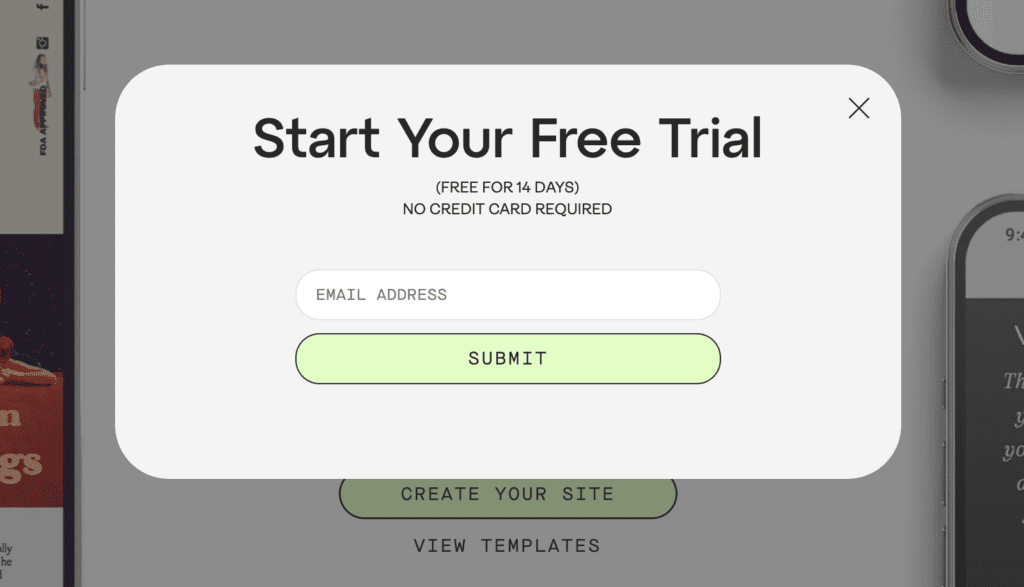
One of the perks of using Showit is that it allows for smooth integration with WordPress for your blog content. Showit will install and set up WordPress for you. Here are the steps:
- Sign Up for Showit
Choose a subscription plan that suits your needs. Showit offers a free trial for 14 days with no credit card required. - Customize Your Design
Use Showit’s drag-and-drop builder to create your website’s design. - Request WordPress Integration
Within Showit, you can request to add a blog to your site via the chat box. Showit will set up a WordPress blog for you. - Access Your WordPress Blog
Once Showit notifies you that your WordPress blog is set up, you can access it through the link they provide. - Start Creating Content
Use the WordPress interface to create and publish blog posts.
You don’t need to know how to code to start a blog and create a website. Platforms like Showit make creating a professional-looking website and blog easy without any technical expertise.
Once your website and WordPress are integrated, you can choose different templates to get the look and feel you want for your brand and blog business. I purchased a Tonic website template for my website/blog, but you can just as easily use a free Showit website template.
Now, you’re ready to create and publish posts on your new blog!
Writing High-Quality Content for Your Mom Blog
The key to a successful blog lies in the quality of the content you create. Here’s why high-quality content is so crucial:
- Builds Trust and Credibility – High-quality content establishes you as a reliable source of information. When readers see that you consistently provide valuable, well-researched content, they trust your advice and recommendations more.
- Engages and Retains Readers – Well-written content captivates your audience, encouraging them to read till the end and return for more. The more value they find in your posts, the more likely they are to become regular visitors.
- Improves SEO Rankings –Search engines favor high-quality content. Well-researched, original content that uses keywords effectively is more likely to rank higher in search engine results, attracting more organic traffic to your blog.
- Increases Shares and Recommendations – Your readers will more likely share quality content, expanding your blog’s reach. People are more willing to recommend blogs that consistently provide valuable content.
Tips for Writing Engaging Blog Posts

Engaging your readers is a key factor in blogging success. Here are a few proven strategies to captivate your audience and make your blog posts more interesting.
- Know Your Audience – Understand their challenges, interests, and values. Tailor your content to meet their needs and answer their questions.
- Create Captivating Headlines – Your headline is the first thing readers see. Make it compelling and intriguing to draw readers in.
- Use a Conversational Tone – As a mom blogger, a friendly, conversational tone often works best. It makes your content more relatable and easy to understand.
- Break Up Your Content – Large blocks of text can be intimidating. Break your content into manageable chunks using headings, subheadings, lists, and images to make it easier to read.
- Include a Call-to-Action – Encourage readers to engage with your content by including a call to action. This could be asking questions, inviting comments, or encouraging them to share your post.
Mom Blog Post Examples

1. Personal Experiences
Sharing your own experience and lessons learned can be powerful and help many moms. For instance, “How I Managed Postpartum Depression: 5 Strategies That Helped Me”.
2. How-To Guides
Detailed guides can provide immense value to readers. For example, “How to Start Homeschooling: A Step-by-Step Guide for Newbies.”
3. Product Reviews
Reviews of products you’ve found useful can help other moms make informed decisions. Like “Top 5 Baby Monitors of 2023: An Honest Review”.
4. Advice Columns
Providing advice on common challenges can be very helpful. Such as “10 Effective Strategies for Dealing with Toddler Tantrums”.
5. Interviews
Interviewing experts or influential people in your niche can provide engaging content, like “An Interview with a Child Nutrition Expert: How to Encourage Healthy Eating Habits.”
Remember, each blog post you write is an opportunity to connect with your audience and provide value.
How To Use SEO To Drive Traffic to Your Mom Blog

SEO, or Search Engine Optimization, is a crucial component of any successful blog. Here’s why:
1. Visibility and Discoverability
SEO makes your blog more visible to people searching for content related to your niche. If your blog appears higher in search engine results, more people are likely to visit it.
2. Increased Organic Traffic
Effective SEO attracts organic (unpaid) traffic to your blog. These are people who are actively searching for information or solutions that your content provides.
3. Credibility and Trust
Websites that rank highly in search engine results are often perceived as more credible and trustworthy.
4. Long-Term Results
Unlike paid advertising, the effects of good SEO can last for a long time. Once your blog ranks well for specific keywords, it can continue to attract traffic for months or even years.
Strategies for Effective Keyword Research

Keywords are the terms that people type into search engines. By understanding and using these keywords in your blog content, you can improve your SEO. Here are some strategies:
1. Use Keyword Research Tools
Tools like Google Keyword Planner, SEMrush, or Ahrefs can help you identify popular keywords in your niche. I use Ahrefs every day! It’s extremely helpful to see how easy or difficult it is to rank for specific keywords before spending time on a blog post.
2. Understand Search Intent
Search intent is the reason why someone is conducting a specific search. Is it to find information, to buy a product, or to learn how to do something? Understanding this can help you create content that meets the needs of users.
3. Focus on Long-Tail Keywords
Long-tail keywords are longer, more specific keyword phrases. They may have lower search volumes but often have higher conversion rates because they attract more qualified traffic. For instance, instead of “toddler nutrition,” you might use “toddler nutrition meal plan.”
4. Use Keywords Naturally
Incorporate keywords naturally in your content, including your title, headers, and body text. However, avoid keyword stuffing (overusing keywords), which can harm your SEO. SurferSEO Can help you insert keywords into your blog post and understand which keywords to use.
5. Optimize Meta Descriptions and Alt Text
Include keywords in your meta descriptions (the snippet of text that appears under your title in search results) and in the alt text of images on your blog.
6. Keep an Eye on Your Competitors
Look at what keywords your competitors are ranking for. Are there any you haven’t thought of? You can use Ahref’s to do this.
Promoting Your Mom Blog

Creating high-quality content is not enough; promoting your blog is equally important. Here’s why:
- Increase Visibility – Even the best content can go unnoticed if no one knows it exists. Promoting your blog increases its visibility and reach.
- Grow Your Audience – By promoting your blog, you attract new readers who may not have found you otherwise.
- Boost Engagement – Promotion encourages engagement, including likes, comments, and shares, which can help boost your blog’s visibility even further.
- Enhance SEO – Sharing your content on social media and through guest blogging can generate backlinks to your blog, improving your SEO.
Promoting Your Mom Blog on Social Media

- Choose the Right Platforms: Not all social media platforms may be suitable for your blog. Determine where your target audience spends most of their time and focus on those platforms. You may need an Instagram account, a Pinterest account, or both. Where does your audience hang out?
- Share Regularly: Consistency is key on social media. Regularly share your blog posts and other relevant content to keep your audience engaged.
- Engage with Your Audience: Respond to comments, participate in discussions, and show appreciation for your followers. Social media is not just about broadcasting; it’s about building relationships.
- Use Visuals: Photos, infographics, and videos can attract more attention than text alone.
- Leverage Hashtags: Appropriate use of hashtags can help increase the visibility of your posts.
Guest Blogging with Other Mom Bloggers

Guest blogging involves writing posts for other successful blogs in your niche. This can be a powerful way to expand your reach, build your reputation, and generate backlinks to your own blog. Here’s how to do it:
- Identify Potential Mom Blogs – Look for blogs in your niche that accept guest posts. These should be blogs with a significant following and a good reputation.
- Pitch Your Post: Contact the blog owner with a proposal for a post. Make sure you understand their guidelines for guest posts and propose a topic that will be valuable to their audience.
- Write a High-Quality Post: Your guest post should represent your best work. After all, it’s a chance to showcase your expertise to a new audience.
Networking with other mom bloggers can also be beneficial. You can learn from each other, support each other through sharing and promoting each other’s content, and collaborate with top mom blogs on projects.
Promoting Your Blog Through Email Marketing
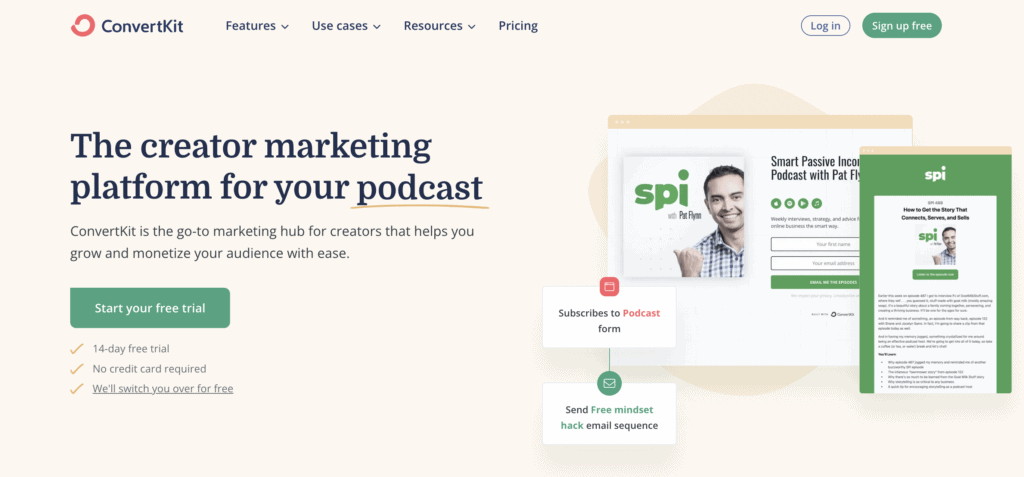
- Build an Email List
Start by encouraging your blog visitors to subscribe to your email list. Offer an incentive, such as a free ebook or a valuable newsletter, to encourage signups.
If you haven’t already, sign up for a reliable email marketing platform like ConvertKit. You can start with a free 14-day trial with no credit card required. - Send Regular Emails
Keep your subscribers engaged by sending regular emails. This could include new blog post announcements, exclusive content, and other relevant information. - Keep It Personal
Personalize your emails as much as possible to build a relationship with your readers. Use their names, and segment your email list to send more targeted emails. - Include Calls to Action
Whether it’s asking readers to check out your latest blog post, share your content, or purchase a product you recommend, always include a clear call to action in your emails.
Promoting your blog requires consistent effort, but leveraging multiple channels can grow your audience and increase your blog’s visibility.
Building a Community

Building a community around your mom blog can amplify its impact and success. It encourages engagement, builds loyalty, provides support and enhances your understanding of your audience. Here’s how to engage with readers:
- Respond to Comments – Make it a priority to respond to comments on your blog and social media posts. This shows your readers that you value their input and encourages further interaction.
- Ask for Feedback – Encourage your readers to share their thoughts and opinions. This could be through polls, surveys, or open-ended questions.
- Share User-Generated Content – If a reader shares a photo or post related to your blog, consider sharing it (with their permission). This can help your readers feel valued and seen.
- Create a Facebook Group – Facebook groups are an excellent place for your readers to connect with each other and with you. Encourage discussion, share exclusive content, and ask for input on future blog topics.
- Host Virtual Events – Consider hosting webinars, live Q&A sessions, or virtual meetups. These events can provide real-time interaction and deepen the sense of community.
- Show Appreciation – Regularly express your gratitude for your community. This could be through thank-you messages, shout-outs to active members, or occasional giveaways or rewards.
A blog is not just about sharing your own thoughts and your family life experiences. It’s also about creating a space where readers can connect, learn, and feel supported.
Legal Tips for Blogging

While blogging might initially seem all about creativity and communication, there are also significant legal aspects you must consider to make sure you’re complying with relevant laws and regulations. Here are a few key areas to consider:
1. Disclosures for Affiliate Links
If you’re using affiliate links on your blog, it’s essential to disclose this to your readers. According to the Federal Trade Commission (FTC) in the United States, you must clearly disclose your affiliate relationships with companies when promoting their products or services. This disclosure should be clear and conspicuous, not hidden at the bottom of your blog or on a hard-to-find page.
2. Copyright Issues
Respect the copyrights of others. Don’t use someone else’s work, such as text, photos, music, or videos, without obtaining permission or ensuring it falls under fair use. You can be sued for copyright infringement if you do so. Similarly, make sure to protect your own work too.
3. Privacy Policies
Privacy policies are mandatory if you collect personal data from your readers (like email addresses for your newsletter). Your privacy policy must detail how you gather, use, disclose and manage your site visitor’s data. It’s particularly important to be aware of specific regulations like the General Data Protection Regulation (GDPR) in the EU or the California Consumer Privacy Act (CCPA) in California, USA, which have strict data protection and privacy rules.
4. Terms and Conditions
Having terms and conditions for your blog can limit your liability in case of any errors in your content, provide copyright protection, and explain how you handle user data. They can also set the governing law for disputes and outline acceptable user behavior on your site.
5. Disclaimers
If your blog provides advice in areas like health, finance, or any professional field, it’s wise to include a disclaimer clarifying that you’re not a certified professional and that your advice should not replace professional advice. This can help protect you from legal liability.
These are just a few legal aspects you need to consider as a blogger. It’s essential to familiarize yourself with the laws and regulations applicable in your country or state. Consider consulting with a legal professional to ensure your blog is compliant, especially as your blog grows and generates more income. Legal advice is essential to safeguard yourself, your blog, and your readers.
Monetizing Your Mom Blog

Monetization is crucial to turning your mom blog into a profitable venture. Here’s how to go about it:
1. Affiliate Marketing
This involves promoting other companies products or services on your blog. When someone clicks on an affiliate link on your site and makes a purchase, you receive a commission. It’s important to choose products or services that align with your niche and are likely to be of interest to your readers.
2. Advertising
You can sell ad space on your blog to businesses interested in reaching your audience. This can be done through direct agreements with businesses or through an ad network like Google AdSense.
3. Sponsorships
In a sponsorship, a company pays you to write a post or create content about their product or service. As with affiliate marketing, any sponsored content should be relevant to your blog and valuable to your audience.
4. Creating and Selling Online Courses
If you have specific skills or expertise, you can create online courses and sell them on your blog. For instance, if your mom blog focuses on home organization, you might create a course that guides people through the process of organizing their homes.
5. Selling Digital Products
Besides online courses, you can also sell other digital products like eBooks, printables, or photography. If you write about meal planning, you could sell meal planning templates or a cookbook with your favorite recipes.
6. Offering Coaching or Consulting Services
If you’re an expert in a particular field, you could provide coaching or consulting services. For example, if your blog centers around working from home, you might offer consulting services to help others transitioning to remote work.
While monetization can provide a great source of income, no matter which monetization methods you choose, they should always provide value to your audience and be a natural fit with your blog’s content.
Time Management for Mom Bloggers

Balancing the roles of mom, family life, and blogger can be challenging. Both demand a lot of time, energy, and attention. That’s why effective time management is essential. By managing your time efficiently, you can ensure that your blog and parenting responsibilities receive the attention they need without sacrificing your family fun, home life, or personal well-being.
1. Set a Blogging Schedule
Allocate specific times for blogging tasks in your day or week. This could be early in the morning, during naps, or after the kids go to bed. Consistency can help you establish a routine and maximize your available time.
2. Prioritize Your Tasks
Not all tasks are created equal. Identify and prioritize the tasks most critical to your blog’s success. This could be writing posts, responding to comments, or promoting your blog on social media.
3. Batch Your Work
Group similar tasks together and do them simultaneously. For example, you could dedicate one day to writing posts, another day to taking photos, and another day to promotion.
4. Use Tools to Automate Tasks
There are numerous tools available that can help automate some of your blogging tasks. For instance, you can use social media scheduling tools to schedule your posts in advance or email marketing software to automate your newsletters.
5. Outsource When Possible
If your budget allows, consider outsourcing tasks such as graphic design or technical maintenance. This can free up your time to focus on the tasks that you enjoy and that only you can do.
6. Set Realistic Goals
As a mom blogger, you juggle multiple responsibilities. Be realistic about what you can achieve in the time you have. Setting unrealistic goals can lead to stress and burnout.
7. Take Care of Yourself
This might not seem like a time management tip, but taking care of your physical and mental health can boost your productivity. Schedule time for rest, relaxation, and activities you enjoy with the whole family.
Remember, being the best mom, and a successful mom blogger isn’t about doing it all but making the most of your time. Motherhood can be a very rewarding and challenging time. By managing your time effectively, you can build a successful blog while still enjoying the journey of motherhood.
Inspirational Success Stories of Mom Bloggers

There’s nothing more motivating than hearing about others who have achieved what you aspire to. Here are some success stories of top mom bloggers who have successfully monetized their blogs from various niches and backgrounds.
Suzi Whitford, an industrial engineer turned mom blogger, is the brains behind StartAMomBlog. After starting her blog to share her journey and provide tips to other moms, she monetized her blog by selling online courses that teach others how to create their own mom blogs. Suzi’s blog is a testament to the fact that you can turn your passion into profit with hard work and determination.
Elna Cain, a professional freelance writer and twin mom began TwinsMommy to share her experience as a mom to twins. Elna used her writing expertise to create high-quality content for her blog and used Pinterest marketing to boost her traffic. Today, Elna makes money from her mom blog through affiliate marketing, selling her products, and offering freelance writing services.
Denene Millner, a New York Times best-selling author, started MyBrownBaby to provide an online space for African-American moms. She has monetized her blog through her unique voice and perspective by landing book deals, receiving sponsorships, and advertising.

Lauren Tamm started The Military Wife and Mom to share her experience as a military spouse and mother. She has managed to monetize her own mom blog through the sale of her own products, affiliate marketing, and sponsored posts. Her blog serves as an inspiration for military moms everywhere.
What started as a personal blog for Jill Smokler turned into a massive online community for mothers. With its humorous and relatable take on motherhood and mom life, Scary Mommy managed to attract a huge audience. Scary Mommy successfully monetizes her blog through sponsored posts, advertising, and publishing books.
Monica Froese started Redefining Mom to share her journey of balancing motherhood and being a working mom. Today, her blog has transformed into a profitable mom blog and business where she offers online courses and digital products to help other moms succeed in the online business world.
Genevieve, the creator of Mama Natural, has built a popular blog centered around natural parenting. She’s monetized her blog by offering an online birth course, selling books, and leveraging affiliate marketing. Her success is rooted in her passion for a natural lifestyle and the ability to connect with like-minded parents.

Leticia Barr started Tech Savvy Mama to guide parents through the world of technology and its impact on children. By providing tech gear reviews and advice on digital parenting, she’s attracted lucrative partnerships and sponsorships, highlighting how a specialized niche can lead to blogging success.
Janessa Sole runs Thrifty Nifty Mommy, a blog focusing on money-saving tips and product reviews. She monetized her blog through sponsored posts and affiliate marketing. Her genuine and trustworthy reviews have made her blog a resource for many parents.
Joanna Goddard started A Cup of Jo as a hobby, but it soon became a full-fledged lifestyle and parenting blog. With a wide variety of content ranging from fashion to motherhood, her blog attracts a vast audience. As a mommy and lifestyle blogger, she has successfully monetized her blog through sponsored content and brand partnerships.
Ree Drummond started The Pioneer Woman as a way to share her life on a ranch in Oklahoma. It quickly grew in popularity due to her engaging storytelling, delicious recipes, and stunning photography, and is one of the best mom blogs. The Pioneer Woman has been monetized through book deals, a cookware line, and a television series on the Food Network, demonstrating the powerful potential of a mom blog.

Joy Cho started her blog as a graphic design studio, but it has grown to include lifestyle advice, home decor inspiration, and parenting stories. oh joy! has been monetized through collaborations with brands like Target, creating products, and licensing her designs, illustrating the power of a strong personal brand.
Jen Kossowan shares her life as a mom and teacher living between Canada and the Middle East. The uniqueness of her situation and the quality of her content have led to partnerships and sponsored posts. Her creativity in children’s activities and recipes makes Mama Papa Bubba a favorite among parents worldwide.
Founded by Isabel Kallman, Alpha Mom is a consumer advice and lifestyle website for mothers. Isabel started this blog when she realized there was a lack of resources to guide her through motherhood and raising kids. Today, Alpha Mom is a successful blog offering advice on various everyday life topics, including pregnancy, health, family activities, and parenting in the digital age. It is one of the best mom blogs that generates revenue through sponsored content and brand partnerships. This success story emphasizes the importance of identifying gaps in the market and meeting the needs of a specific audience.
These successful mommy bloggers demonstrate that it’s possible to turn a mom blog into a profitable venture with passion, consistency, and a willingness to learn and adapt. These mommy bloggers have managed to carve out their unique niches and monetize their expertise in ways that serve their audiences and their entrepreneurial dreams, as many mom bloggers do.
Conclusion

In this post, we’ve navigated the journey of starting a mom blog and transforming it into a profitable blog and mommy blogger business. Building a successful mom blog is a marathon, not a sprint, requiring consistency, patience, and continuous learning. Depending on your niche and the amount of time you spend on your mommy blog, it may take a few months or years to see significant traction. However, with determination and passion, your mom blog can be a rewarding platform, connecting you with a community and providing a source of income – making you one of the next best mom bloggers.
FAQ’s
Q1: What is a mom blog?
A: A mom blog is a blog run by a mother, often focusing on topics related to parenting, motherhood, lifestyle, DIY projects, recipes, education, and more.
Q2: How do mom bloggers make money?
A: Mom bloggers can monetize their blogs through various methods including affiliate marketing, advertising, sponsorships, selling digital products, offering online courses, and providing coaching or consulting services.
Q3: How do I start a mom blog?
A: Starting a mom blog involves several steps including selecting a domain name, choosing a blogging platform, setting up hosting, designing your blog, and creating content relevant to your chosen niche.
Q4: What blogging platform is best for mom bloggers?
A: There are many good platforms available, but WordPress is one of the most popular due to its flexibility and ease of use. Platforms like Showit also offer great customization options and seamless integration with WordPress.
Q5: How do I choose a niche for my mom blog?
A: Your niche should align with your passions and expertise. It’s also helpful to consider what your potential audience might be interested in and where you can provide unique value.
Q6: Are there successful mom bloggers I can learn from?
A: Yes, there are numerous successful mom bloggers, including Suzi Whitford of StartAMomBlog, Elna Cain of TwinsMommy, and Jill Smokler of ScaryMommy, to name a few.
Q7: Do I need to know how to code to start a mom blog?
A: No, many blogging platforms offer user-friendly interfaces and tools that do not require any coding skills.
Q8: How much does it cost to start a mom blog?
A: The cost to start a mom blog can vary depending on the platform, hosting service, domain name, and other resources you choose. However, it can be done on a small budget and scaled up as you start to generate income.
Q9: What should I consider when creating and selling online courses on my mom blog? A: You should consider the relevance of the course content to your audience’s interests or needs and the quality and structure of the course. It’s also crucial to price it appropriately.
Q10: How can I handle negative comments or criticism on my mom blog? A: It’s important to respond professionally to criticism, seeking to understand the commenter’s perspective and addressing any valid concerns. Not all comments require a response, and it’s essential to avoid engaging with trolls or disrespectful comments.

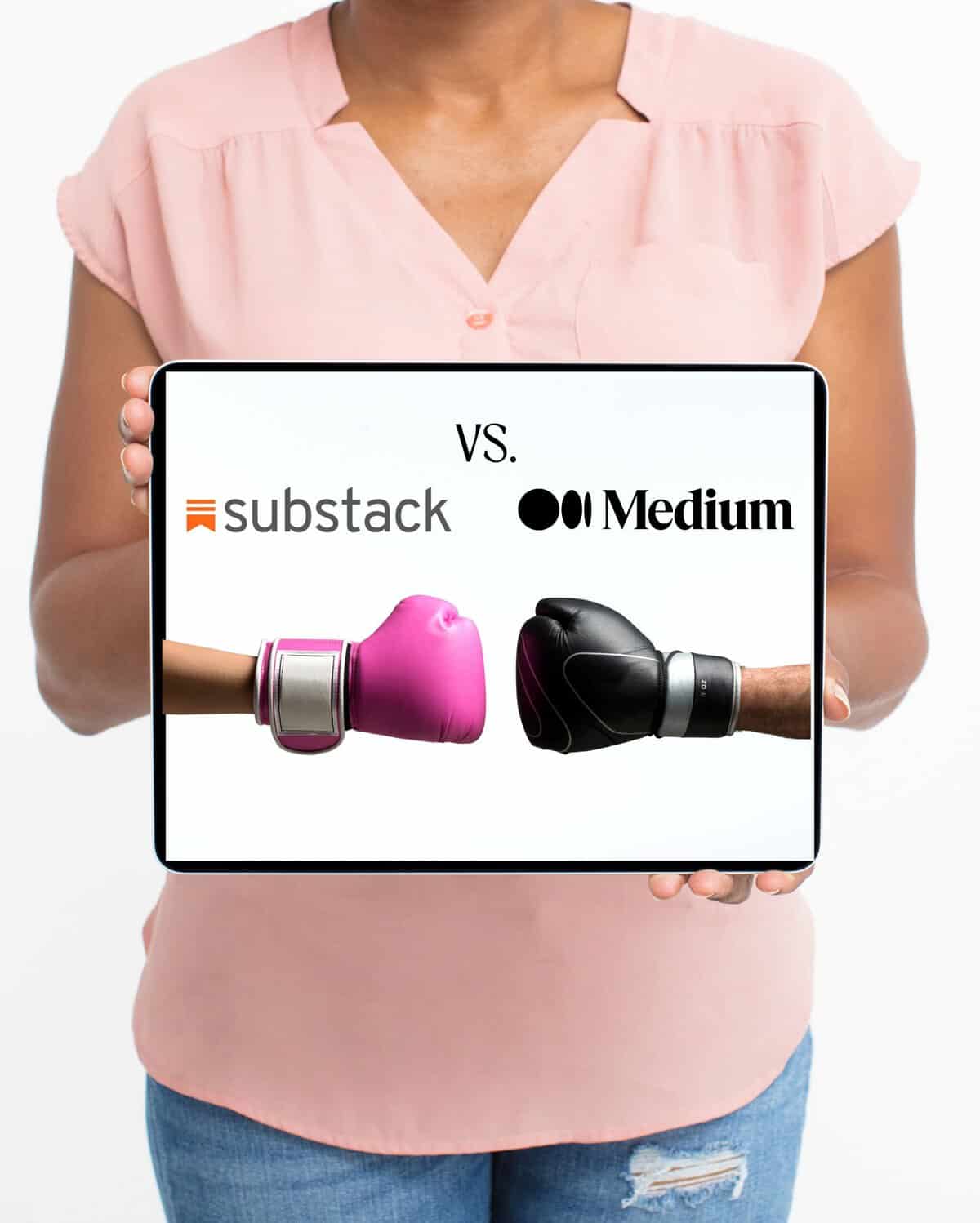
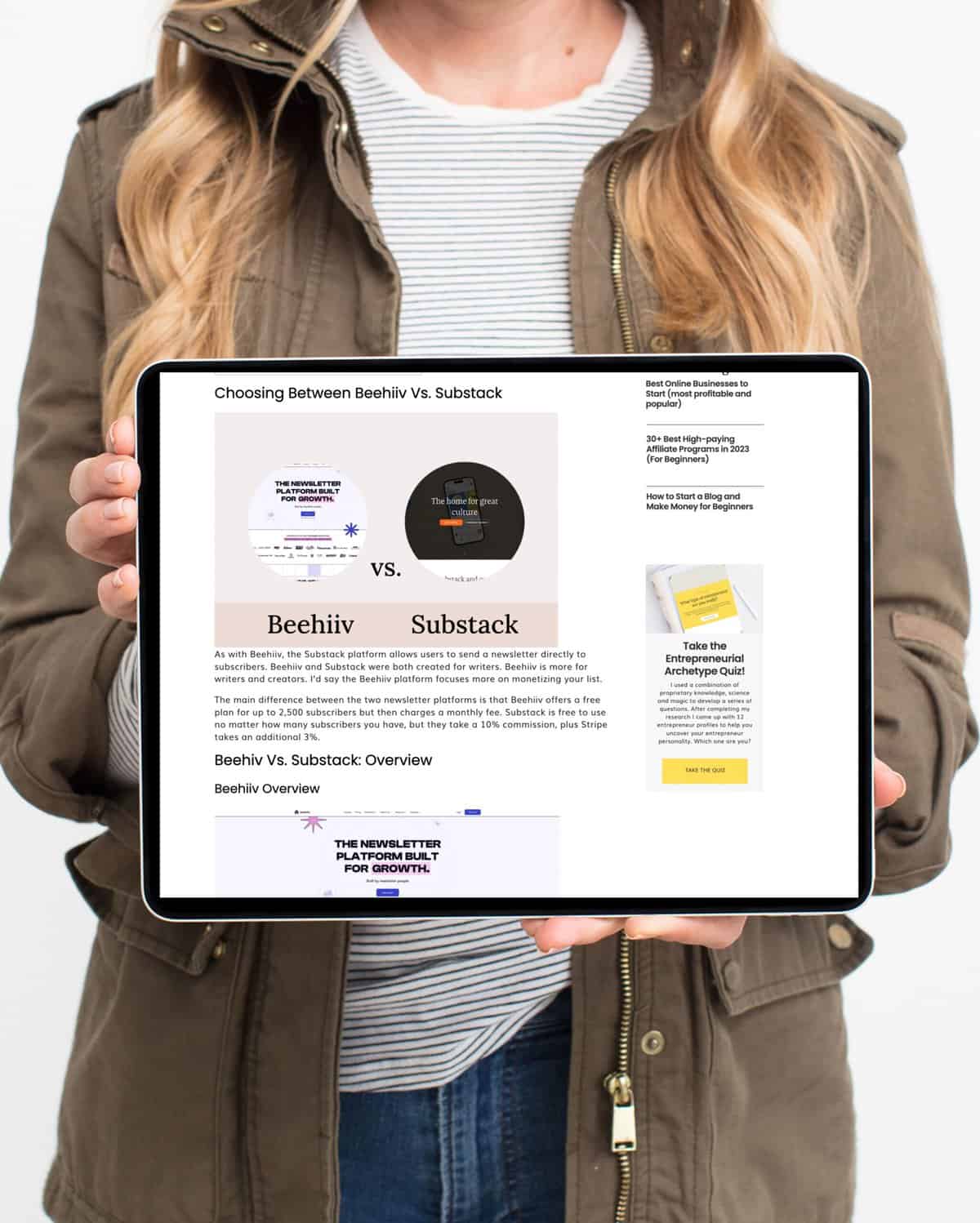



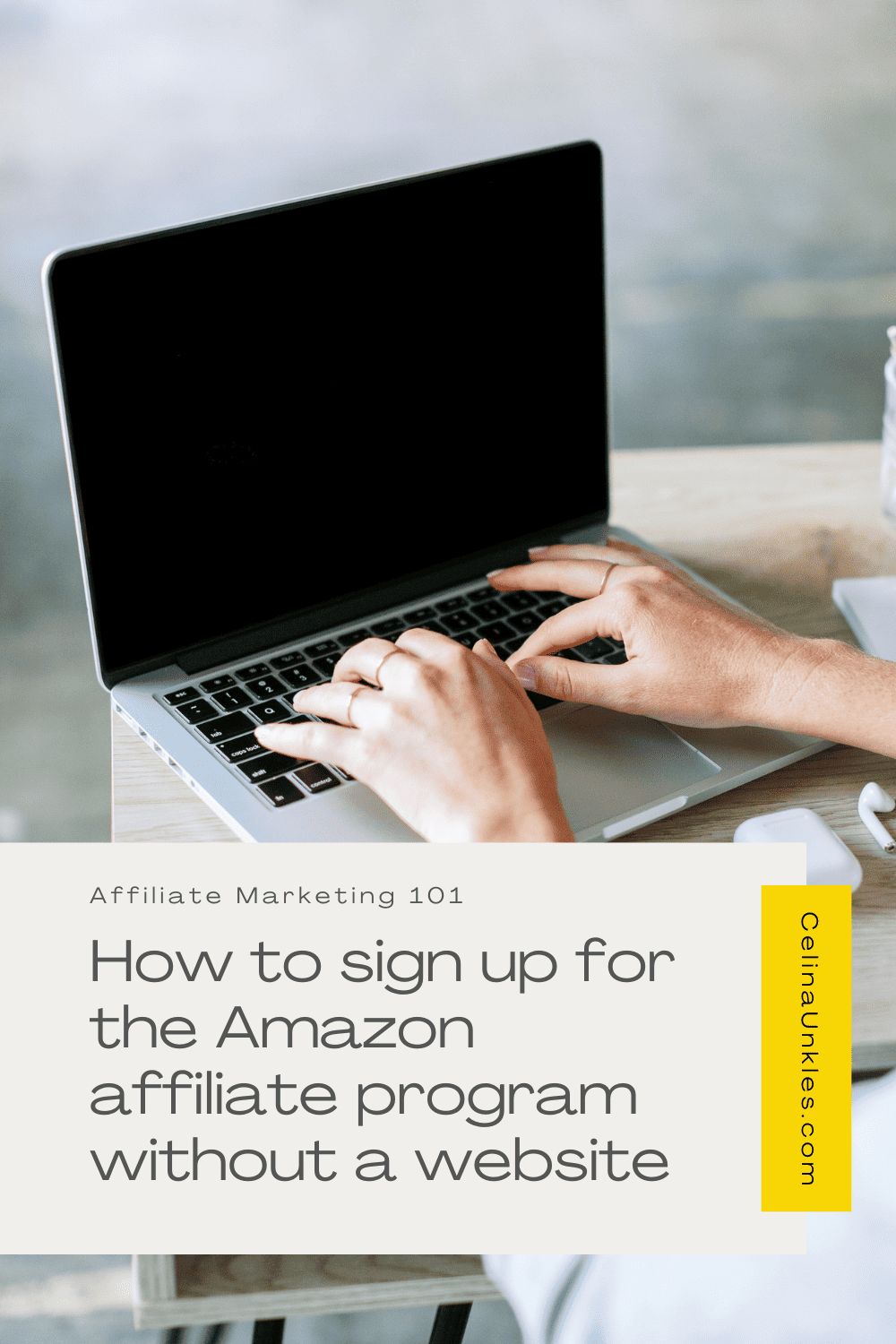
+ show Comments
- Hide Comments
add a comment